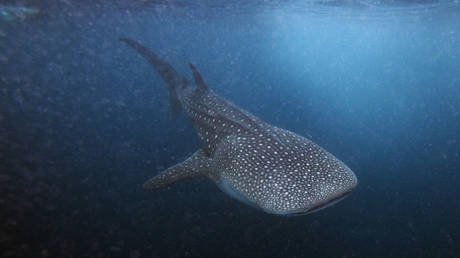
Scientists from the Okinawa Churashima Research Center in Japan have discovered that the whale shark has developed unique eye-adaptations similar to teeth.
The detailed research confirmed that the eyes of the whale shark are covered with eye denticles: small tooth-like projections that act as a rudimentary form of protection for the shark’s eyeball.
Eyeballs are crucial in helping a creature recognise its environment. However, due to their external nature, they are often subject to hazards.
This being the case, many species of animal developed ways of protecting their eyes. Some evolved to have eyelids, others retract their eyes deeper into their skull, and some, as the research suggests, developed denticles.
The eye denticles differ in “morphology from that of the dermal denticles distributed over the rest of the body” due to different functionalities.
Dermal denticles look and feel similar to scales but are actually the same as teeth. The rough skin of a shark is composed of dermal denticles and reduces drag, allowing it to swim faster.
The eye denticles, on the other hand, are designed to mechanically protect the eye by reducing abrasion.
The research also revealed that the whale shark (which is the largest fish, reaching over 18 meters in total length) was also discovered to be capable of retracting its eyes into its socket as another means of eye-protection.
Until now, it was believed that these sharks rarely relied on vision. The fact that this species has developed such protective measures of its eyes “contradicts the general, though poorly established, notion of low reliance on vision in this species.”
The scientists conclude that as eye denticles have yet to be found on closely related species of shark, they are a “unique” characteristic to the whale shark.
If you like this story, share it with a friend!




